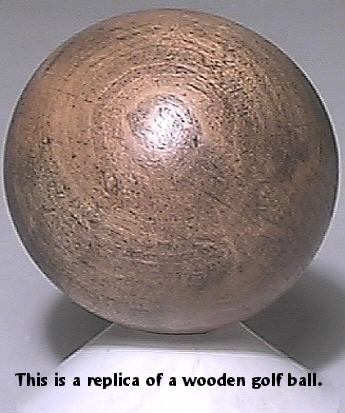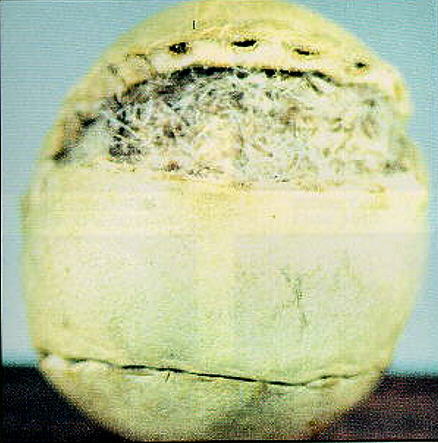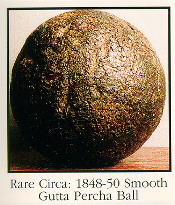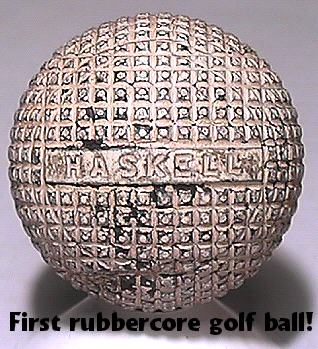
The History of Golf Balls

Thanks is extended for the use of this graphic http://webcom.com/oldgolf/woodball.jpg
The golf ball has changed dramatically through the years. Smooth hardwood balls were used between the 1400 and 1700's. There are very few if any balls remaining from this period. The average distance that a hardwood ball could be drived was around 100 yrds.

Thanks is extended for the use of this graphic http://www.webcom.com/oldgolf/opfeath1.jpg
The next ball to be introduced to the sport was the feather ball. This ball was simply made of feathers encased in leather. The stitching for the ball was facing inward to maintain the smoothness of the ball. It was believed that this would create less friction while the ball was in flight. The feathery could be driven between 150 and 175 yrds.

Thanks is extended for the use of this graphic http://www.webcom.com/oldgolf/smoguty6.jpg
The next ball to join the game was the gutta-percha ball. This ball was made from the sap of the Malaysian Sapodilla tree. It also was smooth serfaced. To view information about the flight of the smooth ball click here. After some use the gutta-percha ball would become nicked and scared.

Thanks is extended for the use of this graphic http://www.webcom.com/oldgolf/golfcollecting/whatis1x.html
It then became apparent to enthousiasts of the sport that the rough surfaced ball began to stay in flight longer and therefore go farther. In some circles the credit for this discovery is given to a professor at Saint Andrews University in Scotland. Several scared golf ball designs were tried since the discovery till the 1930's when the current golf ball design with a rubber core, hard outer shell and between 330 and 500 dimples. The current ball flies an average of 180 to 250 yrds. That is almost double that of its predicesors. To view information about the flight of the dimpled ball click here.






Thanks is extended for the use of this graphic http://www.titleist.com/htm/tech/aero5.asp